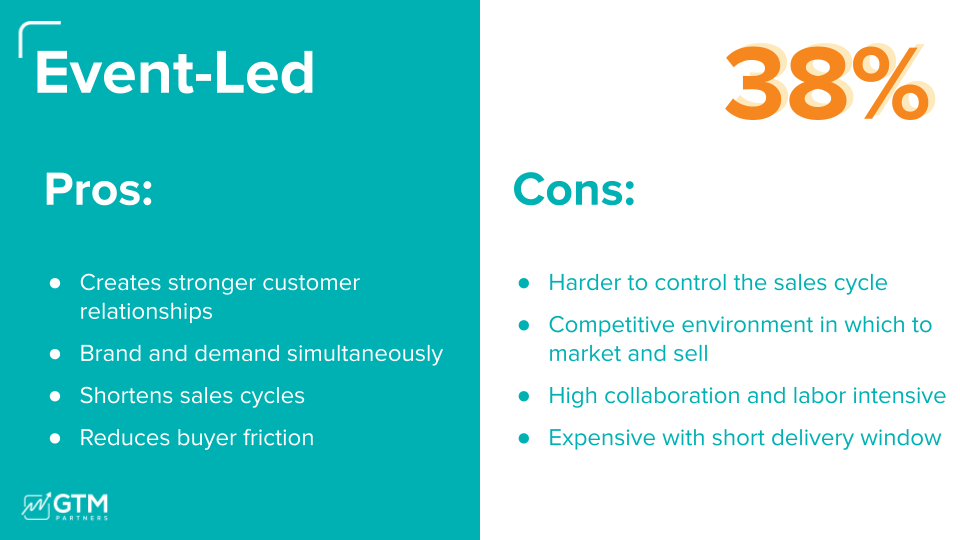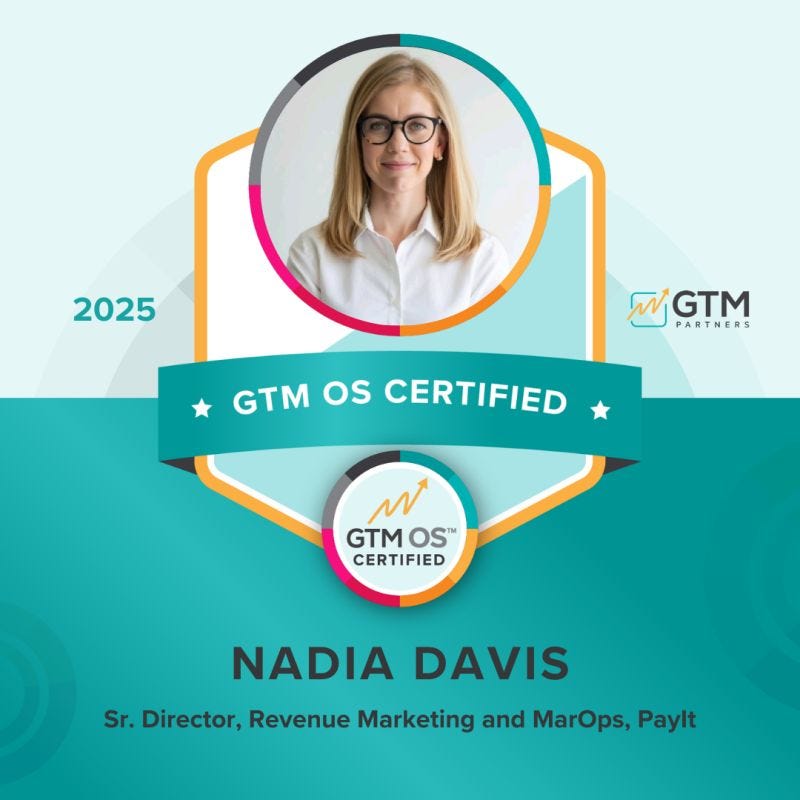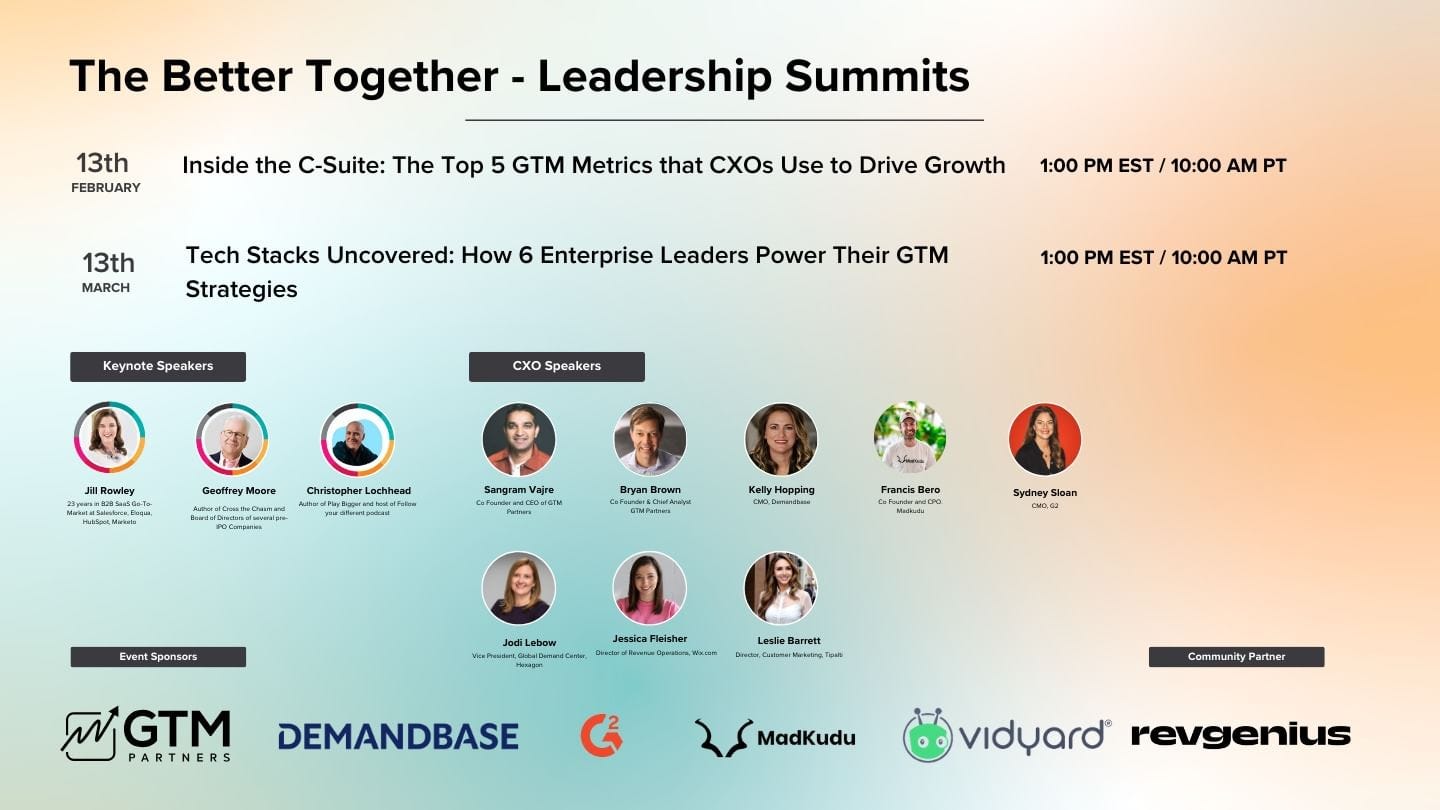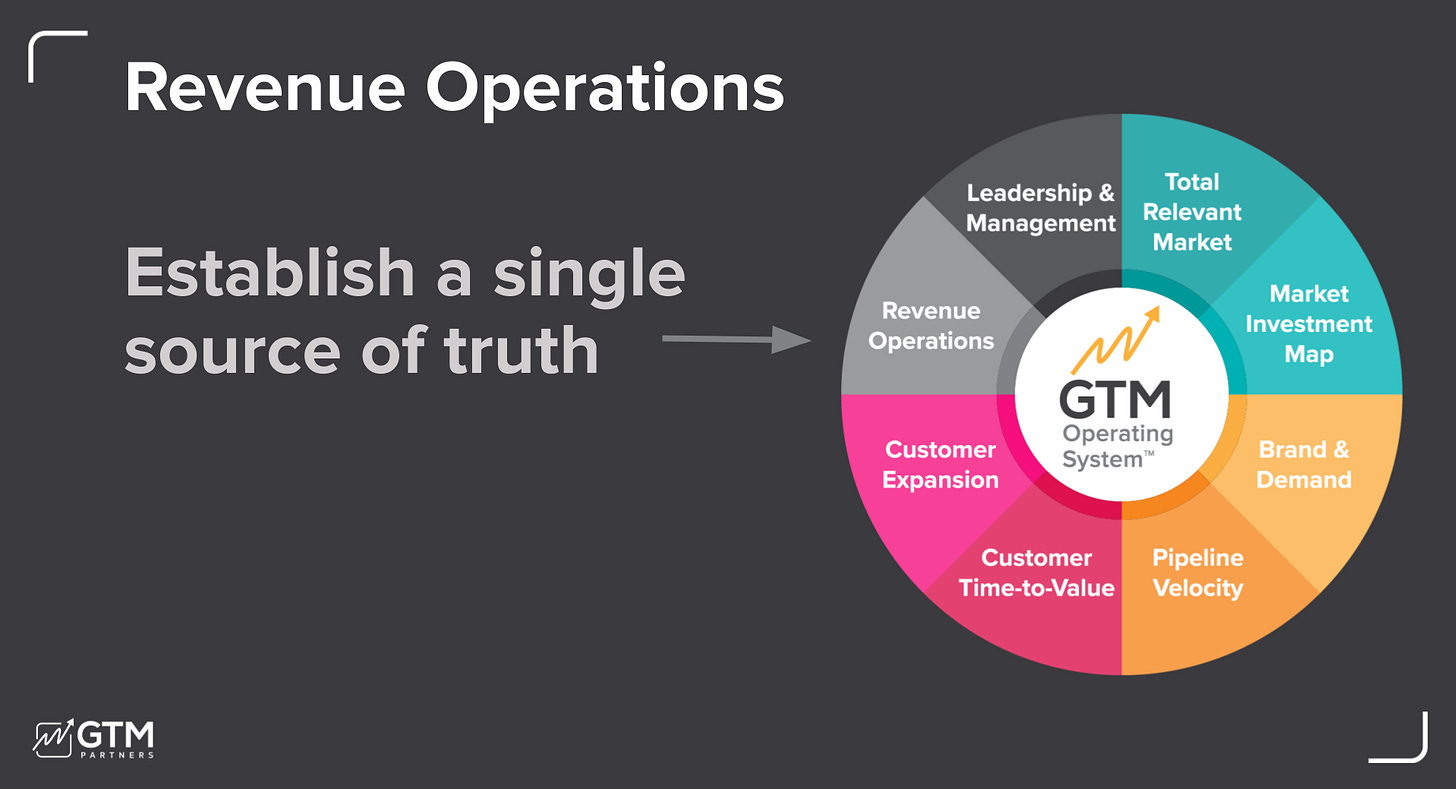Filters
The 6 GTM Motions Every B2B Should Know (And How to Use Them)
Thanks for being one of over 175,000 forward-thinking GTM Leaders who subscribe to this weekly research note.
This week’s research note includes:
GTM Research: The 6 GTM Motions Every B2B Should Know (And How to Use Them)
Spotlight:
Event: Better Together Leadership Summit
Research: The 6 GTM Motions Every B2B Should Know (And How to Use Them)
Every business needs a clear strategy to take its product to market, but not all approaches are created equal.
Unlike campaigns or channels, GTM motions are comprehensive strategies that involve multiple teams—product, sales, and customer success—and have specific revenue goals.
Let’s break down the six GTM motions, their pros and cons, and how to choose the right one (or combination) for your business.
1. Inbound Motion
Inbound is a staple for most businesses, focusing on drawing customers in through content and digital engagement. Leads are nurtured and routed to sales for conversion.
Pros:
Always-on engine that works even when teams are offline.
Buyers come in with intent, often in the consideration phase.
Less labor-intensive than other motions.
Cons:
High competition makes it hard to stand out.
Can result in unqualified leads, frustrating sales teams.
Requires significant investment in shopper behavior tracking and data management.
Best For:
Businesses with strong digital presence and content marketing capabilities.
Learn how ABM can enhance the Inbound-Led GTM motion.
2. Outbound Motion
Outbound is all about proactively reaching out to potential customers. It involves targeted account outreach, often through SDRs (sales development reps) and account-based marketing (ABM).
Pros:
Directly connects with specific buyers, allowing tailored conversations.
Forces inflection points in the buyer’s decision-making process.
Highly targeted and controlled messaging.
Cons:
Labor-intensive and expensive due to SDR and data investments.
Risk of engaging leads not ready to buy.
Standing out amidst widespread outreach is challenging.
Best For:
Businesses seeking to control the buyer journey and engage specific, high-value accounts.
Read our report on Outbound-Led Growth.
3. Product-Led Motion (PLG)
In PLG, the product itself drives adoption. Customers experience value firsthand through free trials, freemium models, or other forms of direct interaction with the product.
Pros:
Reduces buyer friction by letting them try before buying.
Shortens sales cycles for self-service-friendly products.
Encourages active usage, reducing shelfware.
Cons:
Can result in transactional relationships and high churn.
Upselling and expansion often require more effort.
Challenges in converting individual users into organizational buyers.
Best For:
Businesses with user-friendly, highly adoptable products.
Get the 2x2 framework and determine whether PLG is right for your company.
4. Partner-Led Motion
Partner-led motions leverage relationships with resellers, affiliates, or channel partners to expand reach and close deals.
Pros:
Scalable and efficient with the right partners.
Increases reach and builds a network effect.
Shortens sales cycles with trusted partner endorsements.
Cons:
Requires complex management of partner relationships.
Divides revenue, which can affect profitability.
Value propositions must align across products, complicating the sales process.
Best For:
Businesses looking to expand into new markets or scale quickly with limited internal resources.
Read our research on Partner-Led Growth.
5. Event-Led Motion
Event-led strategies focus on creating curated experiences—such as conferences, roadshows, or virtual events—that drive meaningful connections and generate pipeline.
Pros:
High-quality interactions that lead to tangible revenue.
Flexible formats (in-person, virtual, hybrid) fit various buyer preferences.
Builds strong relationships through immersive brand experiences.
Cons:
Expensive to execute and difficult to measure ROI.
Requires significant marketing coordination.
Risk of low attendance or engagement without strong planning.
Best For:
Businesses with well-defined audiences and the resources to create premium experiences.
Get the Event-Led Growth Maturity Model
6. Community-Led Motion
Community-led motions center around creating a movement or category tied to a transformative idea. Buyers engage through thought leadership, peer connections, and shared values.
Pros:
Builds brand loyalty and advocacy.
Provides a novel and organic buyer journey.
Strengthens category positioning in competitive markets.
Cons:
Longer sales cycles for initial buyers.
Requires significant collaboration and labor to maintain authenticity.
Attribution of revenue to community efforts can be murky.
Best For:
Brands with a strong category-defining vision and a focus on long-term customer relationships.
4 Types of Community-Led Growth to Consider
Choosing the Right GTM Motion
Many companies use a combination of motions, depending on their market, audience, and product. Some large organizations leverage all six, while smaller businesses may focus on just inbound and outbound.
Factors to consider when selecting your GTM motion(s):
Target Audience: How does your audience prefer to be engaged?
Resources: Do you have the budget, team, and tools to execute effectively?
Product Fit: Does your product lend itself to product-led experiences or require more traditional sales approaches?
Growth Goals: Are you looking to scale quickly, deepen customer relationships, or explore new segments?
In Closing
The six GTM motions—Inbound, Outbound, Product-Led, Partner-Led, Event-Led, and Community-Led—offer distinct paths to market success. Each comes with unique strengths and challenges, and the right choice depends on your business's goals and capabilities.
As you refine your strategy, consider starting with one or two motions and expanding as your business grows. By aligning your GTM approach with your audience’s needs and your company’s strengths, you can maximize efficiency and revenue potential.
Do you know which GTM motions will drive the highest-quality revenue for your company?
We lead specialized workshops for B2B companies who want to understand how to match the 6 GTM motions to different products, markets, and regions.
Our only requirements are 1) that the CEO must be involved in the process and 2) you must be $10M+ in revenue.
Limited spots available.
Spotlight: Nadia Davis
In a recent LinkedIn post, Nadia Davis (Senior Director of Revenue Planning and MarOps at PayIt) celebrated crossing off one of her New Year’s resolutions early—completing the GTM Partners' GTM OS certification.
The GTM OS provides a comprehensive roadmap for aligning go-to-market (GTM) teams and driving stronger business results. Nadia highlighted how the course helps GTM leaders align functional teams around shared goals, secure buy-in, and track success with clear KPIs.
She gave a special shoutout to some of the course’s most impactful moments:
ICP Scoring: A refreshingly practical and actionable model by Bryan Brown.
RevOps Overview: Insightful strategies on decision-making by Lindsay Cordell.
Field Interviews: Real-world perspectives from top marketers, guided by Sangram Vajre.
Nadia’s enthusiasm is contagious—if you've been searching for a better way to unite your GTM efforts, this training might be exactly what you need to accelerate success in 2025!
Event: Better Together Virtual Summit (500+ already registered)
Discover the secrets to Go-to-Market success in this two-part virtual series. Learn how industry leaders leverage key GTM metrics to drive growth and align teams, and explore the tech stacks powering enterprise efficiency and ROI.
This is a two-part event to be hosted on February 13 and March 13.
Part One (February 13) - Top 5 GTM Metrics used by CXOs
Part Two (March 13)- 6 Enterprise Tech Stacks
Speakers like:
Geoffrey Moore, author of Crossing the Chasm
Jill Rowley, SaaS GTM leader from Salesforce, Eloqua, HubSpot and Marketo
Christopher Lochhead, godfather of category design and one of the authors of Play Bigger
Love,
Bryan and Sangram












